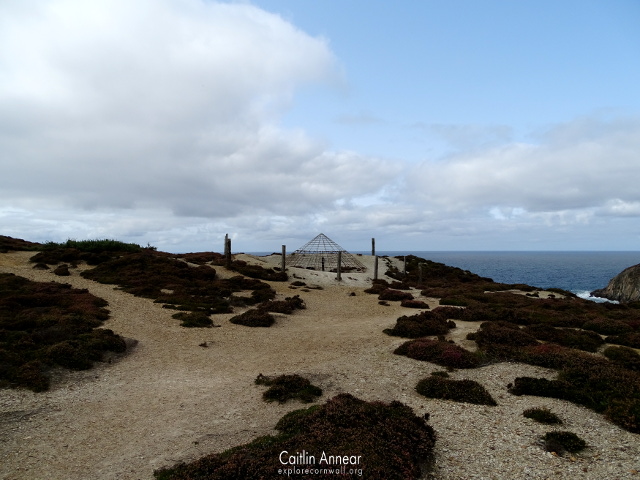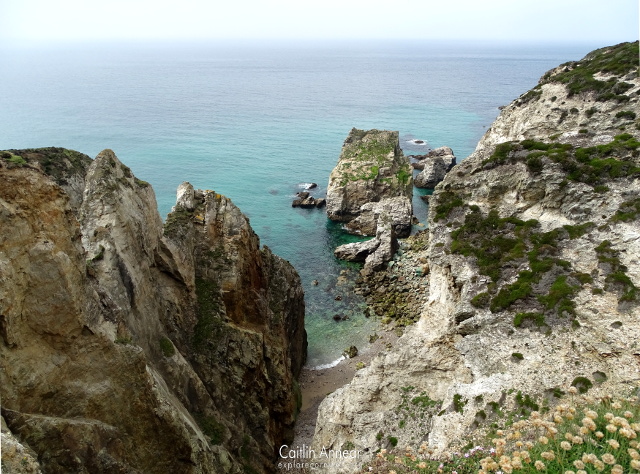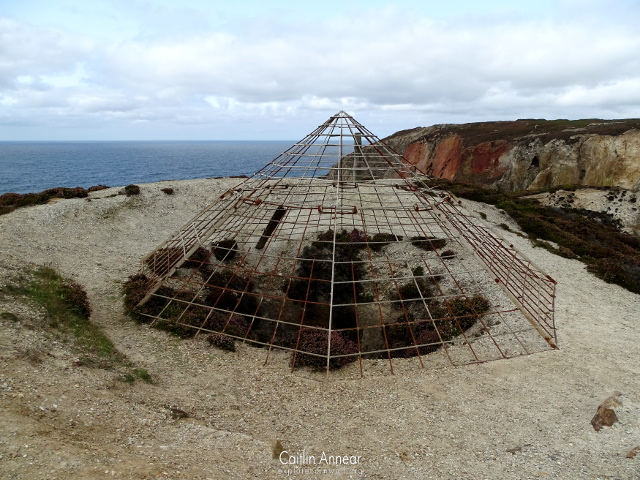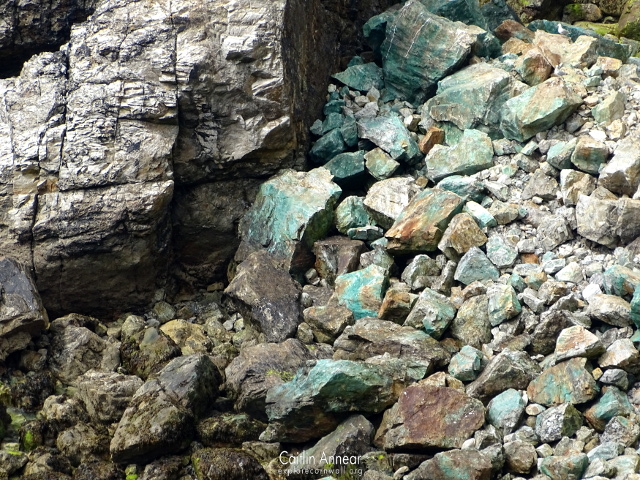On the cliffs between St Agnes and Perranporth are the ancient remains of Wheal Prudence.

Records date back to 1812, but many of the adits and other markers of the mine date from long before this. From 1825 it was purchased by English Mining Association along with Cligga and Perran St George, a venture which came to a halt in 1839 having reached 78 fathoms (143m) below adit. There was a 33″ pumping engine on the site at this time.

In 1862 it was reopened to work the seaward lodes and the western end of Perran St George, with the sinking of the very unique Island shaft. This was done on a rocky outcrop that the miners would reach via a wooden bridge, however by November of the same year the Mining Journal was calling it a failure. It was during 1862-3 that a 70″ pumping engine and 24″ whim were installed on the mine, these were destroyed in 1942 as they were believed to be too prominent a feature on the coastline during WWII (like those at Penhale and Wheal Golden, although many others were left standing).
From 1864 further attempts were made, but this came to a halt in 1868.

Old Engine (107 fathoms/196m), New Engine (72 fathoms/132m), Jacka (48 fathoms/88m), Pearce’s (48 fathoms/88m), Wheal Cock and Davey/Island (112 fathoms/205m).
Wheal Meadow, North/Prudence, South/New, Wheal Cock and Caunter Copper.
1821-65
7,000 tons (7,112,328 kg) of 5.75% copper.
1847-9
1 tons (1,016 kg) of black tin.

The whole site is on a public footpath and free to visit.
The closest carpark is a very small one at Trevellas Coombe, or slightly further away at Perranporth or St Agnes.
Acton, B. (2005) Around Perranporth, St Agnes and Portreath. Truro: Landfall Publications.
Dines, H. G. (1956) The metalliferous mining regions of south-west England. British Geological Survey.
Hamilton-Jenkin, A. K. (1962) Mines and Miners of Cornwall: II St Agnes & Perranporth. Truro: Truro Bookshop.
Ordish, H. G. (1968) Cornish Engine Houses: a Second Pictorial Survey. Trurp: D Bradford Barton Ltd.
